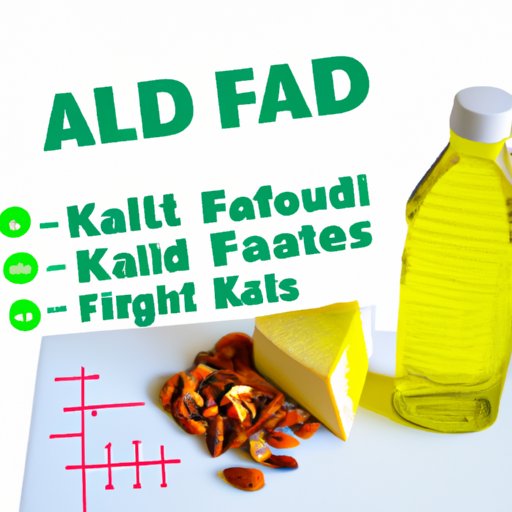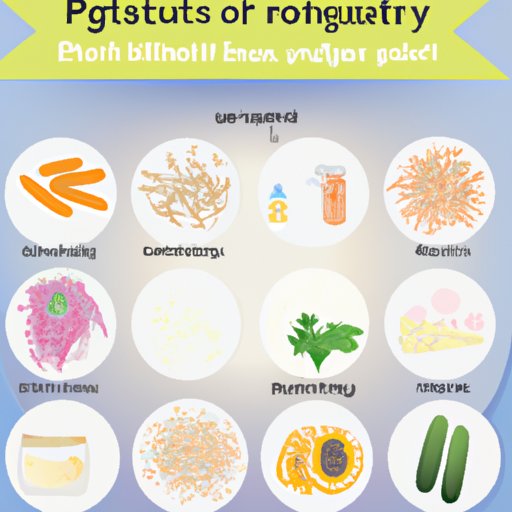Introduction
Bacterial vaginosis (BV) is an infection caused by an imbalance of bacteria in the vagina. It is one of the most common vaginal infections among reproductive-aged women, and it can lead to uncomfortable symptoms such as odor, itching, burning during urination, and abnormal discharge. Although BV is often treated with antibiotics, some women prefer to prevent BV through diet.
In this article, we’ll explore how to prevent BV with diet. We’ll look at the benefits of probiotics and prebiotics, avoiding sugars and refined carbs, increasing intake of vitamin C-rich foods, eating fermented foods, consuming more fiber, and increasing intake of healthy fats. By following these dietary guidelines, you can help keep your vaginal microbiome balanced and reduce your risk of BV.
Foods High in Probiotics and Prebiotics
Probiotics and prebiotics are two essential components of a healthy diet for preventing BV. Probiotics are live microorganisms that help maintain the balance of bacteria in the gut and vagina. Prebiotics are non-digestible fibers that serve as food for probiotics and help promote their growth. The combination of probiotics and prebiotics helps support a healthy and balanced vaginal microbiome.
Examples of foods high in probiotics and prebiotics include yogurt, kefir, kimchi, sauerkraut, miso, tempeh, kombucha, and pickled vegetables. These foods are all rich in beneficial bacteria that help support a healthy vaginal microbiome and reduce the risk of BV.
Avoid Sugars, Refined Carbs, and Processed Foods
Sugars and refined carbohydrates can feed harmful bacteria in the vagina, potentially leading to BV. Therefore, it’s important to limit your intake of these foods. Examples of foods to avoid include white bread, pasta, pastries, candy, and sugary drinks. It’s also important to avoid processed foods, as they often contain added sugar, preservatives, and other additives that can disrupt the balance of bacteria in the vagina.
Increase Your Intake of Vitamin C-Rich Fruits and Vegetables
Vitamin C is an essential nutrient for maintaining a healthy immune system and fighting off infections, including BV. Eating plenty of vitamin C-rich fruits and vegetables can help reduce your risk of BV. Examples of vitamin C-rich foods include oranges, grapefruit, kiwi, strawberries, bell peppers, broccoli, kale, and spinach.
Eat Fermented Foods
Fermented foods are an excellent source of probiotics and prebiotics, which can help maintain the balance of the vaginal microbiome and reduce the risk of BV. Examples of fermented foods include yogurt, kefir, kimchi, sauerkraut, miso, tempeh, and kombucha. Eating a variety of fermented foods can help ensure you’re getting enough beneficial bacteria to keep your vaginal microbiome balanced.
Consume More Fiber
Fiber is an important component of a healthy diet for preventing BV. It helps keep the digestive system running smoothly and prevents constipation, which can disrupt the balance of bacteria in the vagina. Additionally, fiber helps feed the beneficial bacteria in the gut and vagina, promoting a healthy balance of bacteria. Examples of fiber-rich foods include oats, beans, lentils, nuts, seeds, fruits, and vegetables.

Increase Your Intake of Healthy Fats
Healthy fats are essential for maintaining a healthy vaginal microbiome. They help keep the cells of the vagina healthy and protect against infections. Examples of healthy fats include olive oil, avocados, nuts, seeds, and fatty fish like salmon and tuna.
Conclusion
A diet rich in probiotics and prebiotics, low in sugars and refined carbohydrates, and high in vitamins, minerals, fiber, and healthy fats can help support a healthy vaginal microbiome and reduce your risk of BV. Additionally, eating a variety of fermented foods will provide beneficial bacteria that can help maintain the balance of the vaginal microbiome. By following these dietary guidelines, you can help keep your vaginal microbiome balanced and reduce your risk of BV.
(Note: Is this article not meeting your expectations? Do you have knowledge or insights to share? Unlock new opportunities and expand your reach by joining our authors team. Click Registration to join us and share your expertise with our readers.)
